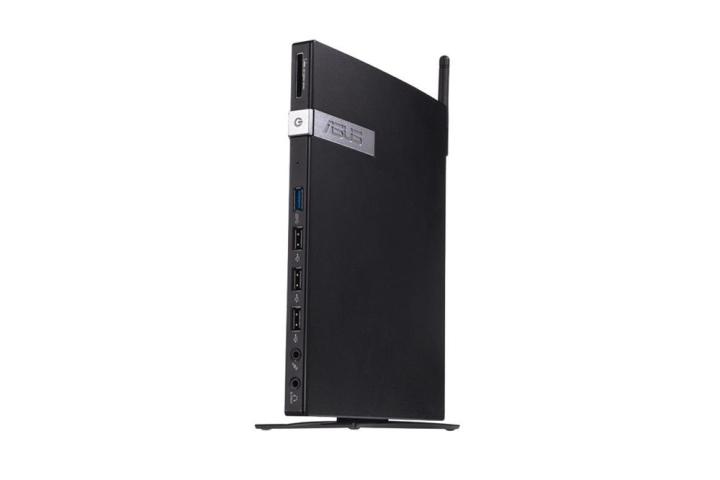
Meet the Asus E210, which the Taiwan-based manufacturer advertises as a “fan-less mini PC for thin client and industrial applications.” It’s very similar to the EB1037, a previous pint-sized computer that ultimately had to accommodate a fan for efficient cooling.
Asus can’t possibly make the same mistake twice, though, so there’s no reason to believe the E210 doesn’t keep nice and cool without a pesky, noisy fan. Virtually identical to the OG EB1037, the newly revealed machine is said to measure 8.6 x 6.8 x 1.1 inches.
The extremely popular Asus RT-AC66U gigabit router, for comparison, sizes up at 8.1 x 5.9 x 1.4 inches. That’s very, very similar, and the height and width are also fairly close to the third-generation iPad mini’s measurements – 7.87 x 5.30 inches. Of course, Apple’s tablet is much thinner, at 0.3 inches.
But you get the idea. The E210, while no PC on a stick, is compact and easy to carry around. It packs a power-efficient and decently snappy dual-core Intel Celeron N2807 Bay Trail processor, and can take up to 4GB memory, as well as 128GB of solid state storage. Clearly not meant for hardcore gaming, the mini PC settles for an integrated Intel HD Graphics solution, focusing on reliability and productivity instead.
The Asus E210 shines in connectivity, too, plastering both the front and rear with card readers, headphone and microphone jacks, USB ports (four in total), HDMI, VGA, LAN, Kensington Lock, and DC-in slots.
Guaranteed to work at least three years, Asus’ mini PC is VESA mountable, and can be hooked up to two monitors simultaneously. Alas, there’s no word on pricing yet, but leads shouldn’t be too hard to find. The actively cooled, previously released EB1037 goes for $179 on Amazon, and all in all, the E210 looks suited to pull off a sub-$200 tag as well.
Editors' Recommendations
- We finally know the price of Asus’ most powerful gaming NUC
- I replaced my PC with the Asus ROG Ally. Here’s what surprised me
- Gigabyte unveils new mini PC — can it rival the Mac Studio?
- Asus teases release date of powerful Tiger Lake-H gaming laptops

